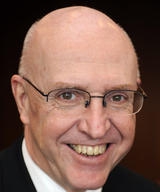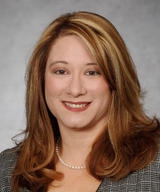Editor: Please tell us about your background.
Murphy: I have been with Shook for 33 years, ever since graduating from law school in 1979. I am just starting my 11th year as the chair, and prior to this appointment, my practice focused mainly on products liability issues all around the country. I have a wife and two children, one of whom has special needs, which has opened my eyes to some of the issues that people face when dealing with diversity and inclusion in the workplace.
Souza-Rasile: I joined Shook, Hardy & Bacon in 2002 as a partner in the Miami office and as a member of the firm’s general litigation division. Four years later, I was appointed the managing partner of that office with responsibility for about 50 attorneys and 100 staff members. In 2010, I was elected by the partners to serve a three-year term on the firm’s executive committee. My practice focuses mainly on products liability and other commercial areas.
Editor: The Minority Corporate Counsel Association (MCCA) has recognized Shook, Hardy & Bacon for its outstanding diversity program by awarding the Thomas L. Sager Award to the firm in 2001, 2002 and 2010. Please provide the broad view of Shook’s diversity program and how it came to be such a prominent aspect of the firm.
Souza-Rasile: Shook’s diversity program began as a grassroots effort more than a decade ago and is now an essential component of the firm’s mission statement. Shook is deeply passionate about sustaining a diverse environment where everyone is respected, feels appreciated and enjoys fulfillment through meaningful contribution.
Our diversity motto, which we work to instill as a value into our culture, is Excellence, Education and Equity. To date, Shook has spent approximately $2.75 million on diversity initiatives, which include funding for training; sponsorship of local, regional and national diversity conferences; and travel-related expenses by the diversity and inclusion committee. Other financial commitments include our supplier’s diversity program. We were the first law firm to join the MidAmerica Minority Business Development Council in 2001, and we fulfill this leadership role by tracking both our own spending with women- and minority-owned business entities and our direct vendors’ spend with such entities.
Murphy: Diversity became a prominent part of the firm, largely because we recognized that it had to be. Certainly, there was a moral imperative, but we also identified a business imperative based on feedback from our clients that they expect diversity to be an important aspect of law firms that service their needs. As a result, we migrated from a grassroots movement to a more formal program, including a diversity and inclusion committee that was embraced fully by me as the firm chair, the executive committee, office managing partners and practice chairs.
We have been very fortunate over the years to work with clients like The Coca-Cola Company, Pfizer, Altria, Microsoft, Sprint, Walmart and DuPont, which all have long histories of recognizing the importance of diversity. Anybody who has heard DuPont’s Tom Sager speak about diversity can’t help but get excited by his obvious passion and leadership in developing diversity and inclusion in the legal profession.
Editor: Please talk about the firm’s culture and ways that it publicly reflects its commitment to diversity.
Murphy: Shook’s culture has always been merit based. We abandon the lockstep principle of compensation after an associate has been with us for two years. People are valued for their talent, and we emphasize not just productivity but also firm citizenship, community outreach, and commitment to issues like diversity.
Specific initiatives include encouraging our people to engage at the forefront of issues that involve human rights. For example, we have supported campaigns, with respect to LGBT equality and the development of women in the legal profession. Shook is recognized as one of the 50 best law firms for women lawyers and was among the first to achieve gold standard certification from the Women in Law Empowerment Forum. Further, we maintain and make available a checklist of action steps to ensure that diversity and inclusion remain a priority for our lawyers and staff.
Editor: Please talk about the current state of U.S. legal education and Shook’s efforts to help law school graduates of diverse backgrounds.
Souza-Rasile: We established The Shook, Hardy & Bacon Foundation in 2000, which has awarded more than $350,000 to nine different law schools in order to support scholarships and retention programs for diverse students. We actively recruit students from job fairs across the country, including the Southeastern Minority Job Fair, the Heartland Diversity Job Fair and DuPont’s Minority Job Fair, to name a few. The firm also commits time for mentoring and is active in an ABA program called the Judicial Intern Opportunity Program (JIOP) – which involves collaboration between the firm’s Houston and Miami offices and its diversity committee.
We started a writing program that targets self-identified, ethnically diverse first-year law students, providing a $5,000 scholarship and, more importantly, critical feedback on their work product from Shook attorneys. This program is conducted with the University of Missouri-Kansas City School of Law and the University of Kansas School of Law, and we just started another program with the University of Miami. These programs enable Shook to develop relationships with diverse legal talent early in their career, and they feed into our summer associate and associate programs. We’ve had great success with these programs over the last three years.
Murphy: We also prepare diverse law students for the job market by offering workshops that help them develop good resumes and provide an opportunity for them to participate in practice interviews. Our educational awareness brown bag lunches have been well received and create an opportunity for outside speakers to discuss, for example, Islamic issues and disability issues in the law. We also held a symposium in which women talked about the issues they face in their international practices.
For Shook employees, we host an annual Diversity Through The Arts event that invites everybody to submit a work of art: poetry, photography or paintings. We recently launched an interactive website, posing questions and posting employee responses to show how interconnected people are, which demonstrated that there are indeed only six-degrees-of-separation among all people. Finally, in October 2011, we had a unity day celebration of our differences, which was very well received by the staff and lawyers.
Editor: Lea, we understand that you made a presentation entitled “The Superjugglers: Writing a Book, Practicing Law and Juggling Personal Responsibilities.” Please talk about the major points in that presentation and give some real-life examples of how professional women manage multiple roles.
Souza-Rasile: The superjuggler/multi-tasker program featured a panel of talented women, all of whom successfully practice law full time while juggling other professional and family commitments. One woman wrote mystery novels, another was a part-time college professor, the third was a self-help coach and the fourth ran a nonprofit for at-risk children.
Each of the panelists admitted that while juggling or multitasking was not easy – amounting to three full-time jobs – the rewards and personal satisfaction made it worthwhile. They credited the support of their firms/companies and, of course, their families for enabling them to juggle many tasks. Like most attorneys, these women have type-A personalities and are quite driven.
In real life, professional women face daunting and competing demands for their time, and, despite programs that offer flex- or part-time work schedules, most women still practice law full time, i.e., much more than a standard nine-to-five workday. In addition to billable work, firms generally expect attorneys to invest quality non-billable hours, including developing new or maintaining existing business for the firm and participating in professional, civic and charitable activities.
At the same time, women who choose to have families are generally still the primary caregivers; it’s a fact of life that the years women spend preparing for partnership are the same years we spend raising our children. Personally, I remember one particular evening spent helping my oldest daughter with an advanced college accounting class, my high school daughter with trigonometry homework and my middle school son with a social studies project. After that, I edited a brief that had to be filed for a client.
Further, many lawyers in my age group, both women and men, also have elderly parents in need of care. Thus, it is very fortunate to know that more firms like Shook have programs that make juggling feasible as well as easier.
Murphy: Superjuggler might be a catchy title, but it’s also accurate. I get tired just watching Lea.
Editor: Are you seeing more diversity in the courtrooms?
Murphy: Because about 95 percent of our firm is litigation oriented, diversity in the courtroom is a very important issue for us and our clients as it directly pertains to our ability to relate to juries. If you begin with the premise that juries reflect their communities, it follows naturally that as the population becomes more diverse, so will the juries that serve those communities.
First and foremost, clients want their trial teams to be excellent attorneys, but they also understand that effective litigators need to be able to connect in an increasingly diverse courtroom – and this is a national development. A secondary issue that reflects the need for firm diversity may present itself in the specific matters being litigated. For example, when dealing with drugs and medical device products that tend to be used by women, it’s important that the lead trial lawyers can relate to those issues. We have clients who specifically want women to lead their trial teams for that very reason.
Editor: Do you have any additional thoughts for our readers?
Murphy: We touched on delivering practice-ready graduates, and I would like to expand on this topic in closing. There is a lot of current discussion regarding law school education, particularly aimed at creating more practical third-year law school curricula – along the same lines as the medical school model. We have clients who time and again have expressed concern that first-year associates are not really ready to engage in the practice of law. Clients are unwilling to finance the training of first-year associates, so our lawyers are working with law schools to mentor students through the process of law school and into their first years in practice.
Over the last few years, we’ve worked on a program called the Success Pathways Project, which involves hiring outside consultants to work with diverse students and associates to identify and foster the attributes of successful lawyers. We now have a 100-Point Pathways Guide to Success that we give to all of our associates. We also share key highlights of that program during summer associate interviews. It includes the benefit of our experience and research with the goal of helping them become successful associates and, ultimately, successful partners. The guide also covers unsuccessful strategies, which are equally important for young attorneys to know and avoid. The guide is Shook’s small contribution to help law school graduates as they embark on their careers and on into their practices as associates.
Published February 29, 2012.




